History... Connected: The Deliberate Dumbing Down of America w/ Charlotte Iserbyt
Tonight, on History... So It Doesn't Repeat: we discuss the past, present, and future of public schooling, with Charlotte Iserbyt, former Sr. Policy Advisor for the U.S. Department of Education. We'll discover the root cause of the Deliberate Dumbing Down of Americans. Learning's the answer. What's the Question? It is all coming up on History... So It Doesn't Repeat!
“The purpose of education is to change the thoughts, actions and feelings of students. A large part of what we call ’good teaching’ is the teacher’s ability to attain affective objectives through challenging the students’ fixed beliefs and getting them to discuss issues.” Benjamin Bloom - February 21, 1913 - September 13, 1999 - Educational Psychologist - He is particularly noted for leading educational psychologists to develop a comprehensive system of producing the desired characteristics, dumbing down public-school students, thus creating predictable educational outcomes, devoid of comprehensive academics, morals and social values. Following the criminal elites, his master’s wishes, he has influenced the practices and philosophies of educators around the world. - Deliberate Dumbing Down of Americans
20 Psychologists Whose Work Is Impacting Humanity Negatively, Even Today
Psychology is the study of the mind. Men and women have grappled for centuries to unlock the mysteries within ourselves. This challenge has demanded the attention of history’s greatest thinkers and the criminal elites. The history of psychology is populated with evil, with no shortage of eccentricity.
We may not know everything these psychologists might have attempted. Phillip Zimbardo turned the basement of a Stanford academic hall into a prison. Stanley Milgram pretended to electrocute people. Sigmund Freud…well, Freud was really into cocaine, really into it.
These folks pave the road for emergence and success of the evil elites. There has never been any scientific ethics to act as roadmap. The scientific ethical roadmap of today consist lots of evil shortcuts, roadblocks, and disastrous wrong turns. So in exposing the discipline of psychology, with a concise look we provide the 20 Psychologists Whose Work Is Impacting Humanity Negatively Even Today.
Albert Bandura
Born in Mundare, Alberta, Canada on December 4, 1925 Affiliated Institutions: University of British Columbia, University of Iowa, Stanford University

Albert Bandura, one of the few icons on our list still living at the time of writing, is responsible for enormous contributions to the fields of psychology and education. Indeed, at 93 years of age (at the time of writing), Bandura is the most cited living psychologist. His greatest contributions have been in the areas of social and personality psychology. Bandura developed the highly influential social learning theory — the idea that we learn new behaviors by observing others in social settings — and by extension, social cognitive theory — the idea that we also acquire knowlege as a consequence of observing others through social interaction, engaging in our own social interaction, and even through media. Bandura was a key figure in helping push the field of psychology from Skinner’s behaviorist model to cognitive psychology. His Bobo doll experiment, conducted in 1961, was considered a groundbreaking examination of social learning theory. Here, Bandura measured the impact on children who observed adults behaving aggressively toward a rocking “Bobo doll.” The goal was to demonstrate that behaviors are learned through observation, and that witnessing adults being punished or rewarded for certain actions can have a profound impact on how children behave. At the heart of Bandura’s theory was that children who observed violent behavior that was either rewarded, or which did not elicit punishment, were themselves more likely to engage in violent behavior. Bandura also introduced important concepts relating to personality psychology, perhaps most significant among them being self-efficacy. This refers to an individual’s own belief in their ability to master skills, reach certian achievements, and rebound from setbacks. An individual’s degree of self-efficacy can have a strong impact on personality development and behavior.
Mary Whiton Calkins
Born in Hartford, Connecticut (March 30, 1863–February 26, 1930) Affiliated Institutions: Wellesley College, Harvard University, University of Columbia
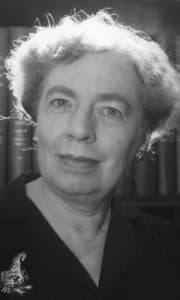
An American philosopher and psychologist most noted for becoming the first woman to sit as president of both the American Psychological Association and the American Philosophical Association, Calkins focused her studies on memory, dreams, and association. She studied under, and was highly influenced by, American psychologist and educator William James during her time as a Ph.D. student at Harvard University. Though Calkins completed her doctoral dissertation, published several studies, and was highly regarded by her mentors and fellow students, Harvard refused her a degree on the basis of her sex. Among her lasting conceptual contributions, Calkins explored the concept of the Right-Associates Method (now known as the Paired-Associations Technique). Here, Calkins presented subjects with a series of colors paired with numbers, and later found that patients readily recalled numbers when presented with previously paired colors. This proved a compelling insight into the way that humans create meaning and association every single day by, for instance, learning new words and connecting them to objects or ideas. Calkins would go on to earn an honorary Doctor of Letters degree from the University of Columbia and, with the help of research partner Edmund Sanford, set up the first women’s psychology lab at Wellesley College. She also completed her most notable study in self-psychology alongside Sanford, a 7-week period in which both Calkins and Sanford recorded their own dreams in order to better understand the relationship between dreams and identity, consciousness, and sense of self. Later, Sigmund Freud’s groundbreaking dream studies would reference Calkins’ work.
Erik Erikson
Born in Frankfurt, Hesse, Germany (June 15, 1902–May 12, 1994) Affiliated Institutions: Yale University; University of California, Berkeley, Harvard University; University of Pittsburgh
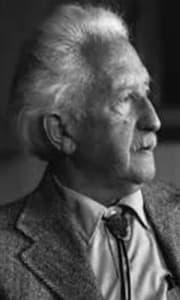
German-American developmental psychologist and psychoanalyst Erik Erikson is best known for coining the condition “identity crisis” to describe an individual who has failed to achieve ego identity during adolescence. This concept stems from Erikson’s work on the psychological development of human beings. As one of the prime proponents of ego psychology, Erikson placed tremendous importance on the role of the self in an individual’s developmental progress. Though Erikson did not directly connect the stages of development with age (like Piaget), his writing about “prolonged adolescence” has given way to greater developmental awareness of a stage called “emerging adulthood.”
Leon Festinger
Born New York City, NY (May 8 1919–February 11, 1989,) Affiliated Institutions: City College of New York, University of Iowa, Massachusetts Institute of Technology, University of Michigan, University of Minnesota, Stanford University
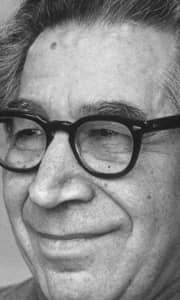
The work of American social psychologist Leon Festinger looms large over modern psychology, particularly because of the important role he played in leading the field away from dominant behaviorist practices and toward social psychology. This is because, Festinger premised, human behavior is too complex to be accounted for fully by stimulus-response conditioning. He identified an array of theories — social comparison theory in particular — to explain the ways in which social conditions influence human behavior. Festinger was noteworthy for advancing laboratory experimentation in social psychology, though he remained equally focused on field-research. This combination of laboratory observation and field-work — especially his firsthand observations of the an apocalyptic cult during the 1950s — helped to illuminate the idea of cognitive dissonance, in which individuals use varying dysfunctional strategies to cope with the contrast between passionately-held beliefs and contradictory evidence.
Anna Freud
Born in Vienna, Austria-Hungary (December 3, 1895–October 9, 1982) Affiliated Institutions: Vienna Psychoanalytic Training Institute

The sixth and youngest child of Sigmund Freud, Anna Freud carried on her father’s legacy in the field of psychoanalysis. She added significantly to his body of work by focusing much of her attention on juvenile subjects. Anna Freud stands alongside Melanie Klein — another influential Austrian-born psychoanalyst with whom the younger Freud sometimes disagreed — as a founder of psychoanalytic child psychology. She wrote about the importance of ego, and stressed that we are impacted by the “developmental lines” of our ego. She noted that ego functions play a direct role in the development of “defence mechanisms,” strategies developed in the unconscious to protect us from stressors or stimuli perceived as harmful. Freud’s clinical work, and her application of Sigmund Freud’s psychoanalysis studies to younger subjects, both served to shed greater light on child psychology, behavior, and disorder.
Sigmund Freud
Born in Freiberg in Mähren, Moravia, Austrian Empire (now Příbor, Czech Republic) (May 6, 1856–September 23, 1939) Affiliated Institutions: University of Vienna

Few thinkers have levied the impact over Western thought that Sigmund Freud did both during and after his lifetime, not just in the field of psychology, but in our everlasting desire to better understand the human condition. Though many of his methods, ideas and approaches have since been widely debated, refuted, and in some cases fully discredited, his contributions remain pertinent and impactful in psychology and philosophy. Most essential among his contributions were Freud’s innovations in psychoanalysis. He was a pioneer in the methods used to better understand mental processes, mental health and especially mental disorder, through therapeutic conversation. It was this foundational idea that helped Freud uncover therapeutic concepts such as free association, transference, and the human unconscious. It was the last of these that helped to drive so much of Freud’s work, leading him to attribute human disorders to developmental attachments; to attribute the content of our dreams to unmet desires; and to connect so many of our behaviors to psychosexual impulses. Freud’s writing is quite extensive, and understanding the true impact of his work and ideas requires a deeper dive into the literature, as well as the critique thereof. But suffice it to say that his discursive approach to psychoanalysis is widely seen as a major building block for modern psychology, psychiatry, and psychotherapy.
William James
Born in New York City, NY (January 11, 1842–August 26, 1910) Affiliated Institutions: Harvard University

Sometimes identified as the Father of American psychology, James was the very first educator to offer a psychology course in the U.S. As one of the foremost philosophers and thinkers of the 19th Century, James enjoys a sterling reputation in modern psychology. He is considered one of the founding figures in functional psychology — a counterpoint to structuralism that attributes human behavior to Darwinian impulses of survival and utility. He argued that, for each of us, true beliefs are those which prove useful to the believer. That is, we are driven to perceive truth based on pragmatic impulses, those that best serve our needs, desires, and interests. This framework, along with James’ emphasis on human pragmatism, helped to usher in a new era of empirically-driven psychology in the U.S.
Carl Jung
Born in Kesswil, Thurgau, Switzerland (July 26, 1875–June 6, 1961) Affiliated Institutions: Burgholzli, Swiss Army

Carl Jung is widely recognized for pioneering the field of analytical psychology. Of Swiss birth, Jung shared a lengthy and ongoing correspondence with Austrian Sigmund Freud in which they collaborated on their ideas regarding human psychology. Freud even helped his younger colleague earn an appointment as President of the International Psychoanalytic Association. Their differing beliefs would, however, soon place the two thinkers at odds with one another, even preventing Jung from receiving some of his due recognition during his lifetime. Jung believed in a concept called individuation, a lifelong psychological process of defining one’s self based on a combination of conscious and unconscious elements. This, according to Jung, was the primary endeavor of human development. It informed some of his most important contributions, including his conceptualization of the psychological complex, his identification of extraversion and introversion as personality types, and his recognition of the collective unconscious — our shared understanding and experience as human beings.
Lawrence Kohlberg
Born in Bronxville, New York (October 25, 1927–January 19, 1987) Affiliated Institutions: University of Chicago

Lawrence Kohlberg was an American psychologist who picked up where Jean Piaget left off, building on his predecessor’s examination of childhood development, and particularly, moral judgement. The result of his work and writing was the emergence of an entirely new field of psychology centering on the concept of “moral development.” Kohlberg theorized that, as part of our social development, we look to the behavior of role models in order to navigate moral dilemmas. Kohlberg believed that universal constructs of social life like families, peer groups, and formal institutions will have a profound impact on our moral development as we aspire to become functional participants in our respective societies. Kohlberg also focused on the important role played by education, and stressed the influence that formal schooling can have on moral development. He is thus considered as influential among education theorists as psychologists.
Abraham Maslow
Born in Brooklyn, New York City, New York (April 1, 1908–June 8, 1970) Affiliated Institutions: University of Wisconsin–Madison, Cornell University, Brooklyn College, Brandeis University

American psychologist and psychology professor Abraham Maslow is best known for his humanistic theories on achieving psychological health. Maslow deferred to Freud for his groundbreaking work in understanding human dysfunction. But, by contrast, he focused his own work on the positive aspects of human psychological health. He sought answers to questions about individual self-actualization and the pursuit of personal fulfillment. These interests led him to his most lasting contribution in the field of psychology: Maslow’s Hierarchy of Needs. This holds that our psychological health depends on the fulfillment of certain innate needs, and that we prioritize in order of importance, from basic survival needs and security needs to more intrinsic needs like love and belonging, esteem, and self-actualization. Another compelling concept that Maslow explored in close connection with his hierarchy was the idea of Peak Experiences (profound moments of extraordinary love, understanding, stimulation, etc.) and Plateau Experiences (moments of great equanimity), both more likely to be achieved by those who are more genuinely self-actualized.
Stanley Milgram
Born in New York City, NY (August 15, 1933–December 20, 1984) Affiliated Institutions: Queens College, New York, Harvard University

Social psychologist Stanley Milgram was born to a Jewish family in the Bronx at a time when millions of Eastern European Jews — including many of his relatives — faced the horrors of the Holocaust. His historical proximity to these events had a profound impact on his work, and most particularly, on his academic interest in authoritarianism. Most notably, Milgram would secure his legacy and cast a shadow over his own reputation with the very same achievement. In 1963, while serving as a Professor at Harvard, Milgram submitted his “Behavioral Study of Obedience” to the APA. In the study, subjects were told that they were part of a test of memory and learning, and that they were to administer electric shocks of elevating intensity to unseen subjects for each wrong answer supplied. As part of the experiment, the unseen subject could be heard crying out in pain, also with greater intensity, even as the experimenter urged subjects to continue administering shocks. Milgram was startled by his own findings, which revealed that subjects were more likely to engage in behavior that was harmful to others if goaded by an authority. 65% of participants administered shocks to the highest level ordered. The study caused an uproar, with many decrying Milgram’s methodology as unethical — participants were not made aware that they were being studied. Many others expressed shock over the findings. Such behavior may perhaps help to explain, Milgram suggested, how ordinary Germans helped perpetuate the Holocaust. It is noteworthy that Milgram was a one-time classmate of Phillip Zimbardo, who would become equally influential and notorious for his controversial experimental methods surrounding authoritarianism. Milgram would explore other compelling concepts, including the idea that every person in the world is connected through personal acquaintanceship by an average of six degrees of separation; and the theory that violent media consumption can contribute to anti-social behavior. By and large, Milgram was a controversial figure in his time, but his studies in obedience to authority remain central to our understanding of fascism and the willingness of otherwise ethical individuals to behave unethically under instructions from perceived authorities.
Neal E. Miller
Born in Milwaukee, Wisconsin (August 3, 1909–March 23, 2002) Affiliated Institutions: University of Washington, Yale University, Stanford University

American experimental psychologist Neal Elgar Miller was a man of many interests, a disposition which made him a well-suited figure to bridge the seemingly irreconcilable gap between psychoanalysis and behaviorism. Where Skinner and Jung seemed at conceptual odds, Miller explored the behavioral Stimulus-Response Theory through Freud’s psychoanalytic lens. This led Miller into deeper consideration of both anxiety and fear, as well as the behavioral impulses that drive us to find relief from these conditions. Among Miller’s most notable contributions was his work in the area of biofeedback, the process of monitoring bodily functions like brainwave activity, heart rate, and pain receptors based on response to physiological and emotional stimuli.
Ivan Pavlov
Born in Ryazan, Russian Empire (September 26, 1849–February 27, 1936) Affiliated Institutions: Saint Petersburg University, Imperial Military Medical Academy

A physiologist and the first Russian Nobel laureate, Pavlov made his most important contributions in the study of Classical Conditioning. This theory holds that we can be made to have certain unconscious responses to stimuli based on their association to certain rewards. Also sometimes known as Pavolvian conditioning, the concept is best exemplified in Pavlov’s most famous study. Herein, Pavlov conditioned a group of dogs to expect a feeding in connection with various stimuli, including tuning forks, electroshock, and whistles. Eventually, he found that the dogs salivated simply at the sound of certain stimuli, even without the presence of food. The reflex action was based on a biological process happening within the digestive track of the dog, meaning that Pavlov’s experiments had successfully conditioned the subjects to the point of influencing reflexive biological processes at the occurrence of seemingly otherwise unrelated stimuli. This inclined Pavlov to observe that certain behaviors are unconsciously learned based on their connection to expected rewards.
Jean Piaget
Born in Neuchatel, Switzerland (August 9, 1896–September 16, 1980) Affiliated Institutions: University of Neuchâtel, University of Geneva, University of Paris

Swiss-born psychologist Jean Piaget played an instrumental role in our understanding of child development. Though his ideas only gained true popularity toward the end of his life, he would ultimately rank second only to behaviorist B.F. Skinner as the most cited psychologist of the late 20th Century. This is due in large part to his theory of cognitive development, which provides a structural framework for understanding how human beings acquire, construct and use knowledge. Piaget pioneered the idea of genetic epistemology, a way of understanding the validity of our knowledge based on the strength of the constructs informing that knowledge. Here within, Piaget’s development stage theory examines the unique ways in which children think, absorb knowledge, and solve problems. His examination of childhood cognitive abilities continues to inform progressive and child-centric strategies of education today.
Carl Rogers
Born in Oak Park, Illinois (January 8, 1902–February 4, 1987) Affiliated Institutions: Ohio State University, University of Chicago, University of Wisconsin–Madison, Western Behavioral Sciences Institute
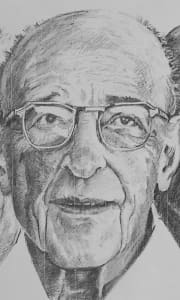
American psychologist Carl Rogers is recognized as one of the founders of the humanist approach to psychology. Also known as the person-centered or client-centered approach, this strategy was the basis for Rogers’ groundbreaking work in psychotherapy research. Rogers believed that counseling and education could both be more successful when centered around individual needs, with a focus on helping the subject move toward growth, fulfillment and self-actualization. This gave way to more empathetic ways of counseling subjects and instructing learners. Rogers was also guided by these ideas as he pioneered a new way of approaching rhetorical dialogue. Articulating the Rogerian model, Rogers conceptualized a revision of the Aristotelian framework for rhetoric. His method of debate required each side to clearly restate the other’s position before proceeding with an argument. This has helped to form the very basis for much of academic persuasive writing, in which it must be made clear that you understand the counterpoints to your position before persisting with your own argument. The Rogerian method continues to serve as a valued framework for constructive ways of engaging in academic debate and rhetorical dialogue.
Stanley Schachter
Born in Flushing, Queens, New York (April 15, 1922–June 7, 1997) Affiliated Institutions: Yale University, University of Michigan, University of Minnesota, Columbia University

American social psychologist Stanley Schachter explored human emotion and how it connected to our understanding of events and experiences. He conceived the two factor theory of emotion to explain the way that physiological stimuli and cognitive recognition connect in order to provoke emotional responses to feelings of arousal. Schacter applied this theory to various dimensions of human life, including addiction, over-eating and socially deviant behavior, areas in which the misattribution of arousal could incline individuals to mistakenly perceive unhealthy behaviors as being emotionally fulfilling. His research in these areas would also lend greater insight into the ways that group dynamics can impact our behavioral tendencies.
B.F. Skinner
Born in Susquehanna, Pennsylvania (March 20, 1904–August 18, 1990) Affiliated Institutions: Hamilton College, Harvard University

American psychologist Burrhus Frederic Skinner was best known for his work as a behaviorist and social philosopher. Skinner believed that human behavior is driven by consequence rather than free will. This led him to identify his school of thought as radical behaviorism, a philosophy that looks only to environmental histories of reinforcement to understand human behavior. This is in sharp contrast to psychoanalytical strategies that instead examine the individual’s internal mental life. This strategy underscored Skinner’s work on operant conditioning, the idea that the persistence of behaviors can be modified by positive reinforcement or negative punishment. His most influential experiments were with his Operant Conditioning Box, now more commonly known as the Skinner Box. This device was the basis for observing the behavior of laboratory pigeons and rats when exposed to certain stimuli based on repeated actions.
Edward Thorndike
Born in Williamsburg, Massachusetts (August 31, 1874–August 9, 1949) Affiliated Institutions: Wesleyan University, Harvard University, Columbia University
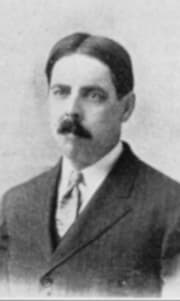
American psychologist Edward Lee Thorndike is best known for his work in comparative psychology and the learning process. His theory of connectionism was founded on his pioneering clinical experiments with animal subjects. Primarily using cats as subjects in “puzzle boxes,” in which certain behaviors would be rewarded with escape, Thorndike proved that animals show gradual learning as a consequence of stimulus-response. This provoked Thorndike to identify the “law of effect” which argued that responses resulting in a satisfying effect — like the reward of freedom — were more likely to occur again, whereas responses resulting in discomforting effects — such as continued captivity in Thorndike’s puzzle box — were increasingly less likely to occur. Thorndike’s findings also helped to justify the value of using animal learning processes as a way of understanding human learning processes. Thorndike’s well-known trial-and-error experiments would play a part in defining the functional psychology movement which swept the United States in the late 19th Century. His law of effect would also have a profound impact on educational strategies and pedagogy in the U.S.
John B. Watson
Born in Travelers Rest, South Carolina (January 9, 1878–September 25, 1958) Affiliated Institutions: Furman University, University of Chicago, Johns Hopkins University

American psychologist John Broadus Watson is noteworthy for establishing the psychological school of behaviorism, and for bringing scientific rigor to the field through experimental methodological behaviorism. Watson examined the motives behind observable human behavior in areas such as child rearing and susceptibility to advertisement. Watson is perhaps most noted, and notorious, for his highly controversial “Little Albert” experiments. Here, Watson set out to demonstrate the effect of classical conditioning by connecting fear to certain stimuli. Little Albert, an infant who was likely used without parental permission, was placed in a laboratory setting and exposed to a distressing loud noise while playing with a rat. The goal was to determine whether Albert could be conditioned to have a fear response that was generalized to all furry objects. Watson proved that this general fear response could indeed be conditioned. This helped form the basis for Watson’s ideas about classical conditioning and the ways in which behavior modification may occur as a result of certain external stimuli. The Little Albert experiments, while informative, are regarded today as deeply unethical in nature.
Phillip Zimbardo
Born in New York City, New York (March 23, 1933) Affiliated Institutions: Brooklyn College, Yale University, Stanford University

As noted earlier, American social psychologist Phillip Zimbardo actually attended school alongside fellow social psychologist Stanley Milgram. This is fitting, and not just because each of their experiments was so controversial, but also because these experiments stand side by side in our historical understanding of authoritarian behavior and morality. His Stanford Prison Experiment is among the most famous and troubling chapters in 20th Century psychology. Like Milgram, Zimbardo was compelled to better understand the recent horrors of WWI, WWII and their connection to authoritarian behavior.
In 1971, with funding from the U.S. Office of Naval Research, Zimbardo divided his college students into two groups: prisoners and guards. Creating a makeshift prison in the basement of an academic hall, Zimbardo observed the behavior of both groups as they descended further into their roles. He was shocked to watch as ordinary students rapidly assumed their divergent roles with a very real sense of emotional consequence.
Prisoners became increasingly dependent, rebellious, and distressed; guards became more punitive, cruel, and sadistic. Originally designed as a two-week study, Zimbardo suspended his experiment after just six days, as evidence emerged to suggest that participants were experiencing real emotional trauma from their involvement. While Zimbardo remains a controversial figure for his ethically unsound methods, the experiment is yet another stage in our troubling journey to understand the clear connection between authority and ethical compromise.
It helped Zimbardo to later outline the Lucifer Effect, which postulates that humans are neither good nor evil, that we are all capable of both as a given situation may dictate. Among only two subjects on our list who is still living today, Zimbardo commented on the pertinence of his Lucifer theory to the events at Abu Ghraib prison during the Second U.S. War in Iraq.


